
In This Post: Learn 4 effective strategies to teach your students how to calm down and self-regulate in the classroom.
If you teach elementary students, you know they can have BIG emotions. However, they may not know how to self regulate those big emotions or have the calm down strategies needed.
We want our classrooms to be calm and we want our students to learn. Those big emotions can get in the way of not only their learning, but other students’ learning if students do not learn to manage their emotions effectively.
That’s why social emotional learning is such a crucial part of our elementary curriculum. We need to teach students the self-regulation and calm down strategies they need to deal with the big emotions.
4 Effective Classroom Strategies to Teach Self-Regulation
It is important that our students understand when they need to calm down, how to calm down, and how to transition back to learning. I spend a lot of time upfront at the beginning of the year teaching these calm down strategies.
However, these are strategies you can weave into your curriculum throughout the year to help your students learn to self-regulate. Adding these calm down strategies into your curriculum will help create a calm classroom that promotes learning.
Teach Students to Identify Their Feelings
Our students have lots of big emotions, but they probably don’t have the words or self-awareness to recognize them yet.
How many times have you had a student who is clearly frustrated either shut down completely or show negative behaviors meant to distract and put them in control?
How about students with constant “stomach aches” from anxiety?
Or your usually bubbly, happy student doesn’t want to talk or participate in anything and they can’t tell you why?
Before our students can learn to self-regulate, they need to be able to say “I am feeling…”. So how do they learn to do this?
We explicitly teach it! At the beginning of the year, we spend time talking about each emotion. We talk about how their face looks and how their body feels during that emotion. This also helps build empathy and helps students recognize that emotion in others.
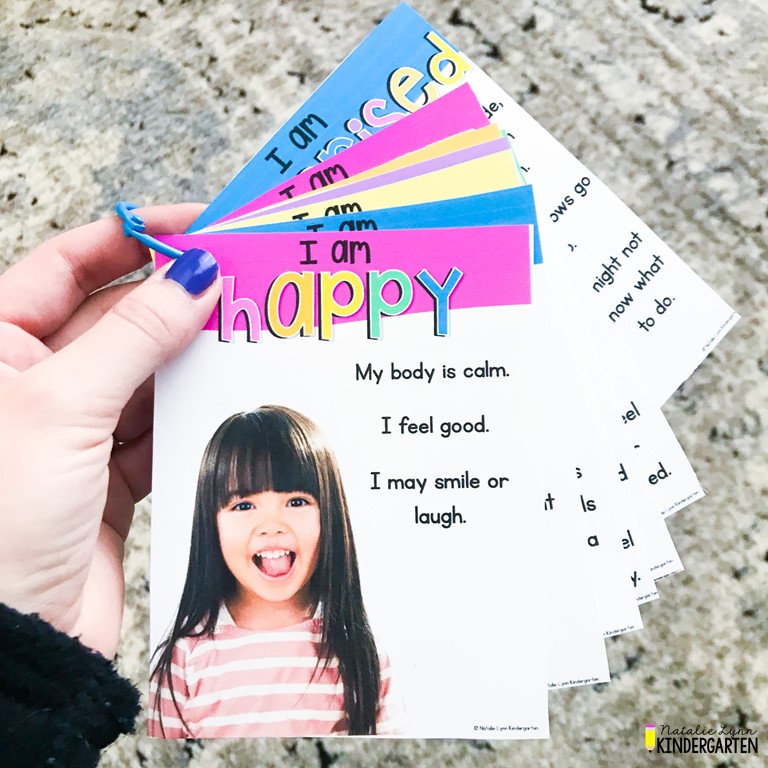
For each emotion, we read books about it, we talk about what might make them feel that way, and then we talk about what helps them feel better – either at home or at school.

You can grab these feelings and emotions posters for FREE down below. They are full poster size, but I printed them four to a page to keep on a ring.
Morning Meeting is a great time to have this discussion. We make it our daily share time prompt.
Teach Your Students Deep Breathing Exercises
Deep breathing exercises are a great way to practice mindfulness in the classroom. Once our students identify how they are feeling, the next calm down step is to reset the brain.
When students are feeling big emotions, their brains are quite literally in fight or flight mode. They can’t calm down or even process information until that brain calms down.
Deep breaths can help reset the brain and signal to it that, hey, we aren’t in danger! I teach my students that their brain controls them. Sometimes our brain freaks out a little bit! It thinks we’re in danger and it might tell us to run or get mad or break things.
But we can tame our brain. Deep breathing exercises gives our brain oxygen and helps it realize that it isn’t in danger.
We choose one deep breathing exercise to do during our Morning Meeting each day. I teach my students to take 3 deep breaths, but if they need more than that, that’s okay!
Teach Your Students How to Use a Calm Down Kit or Corner
Once we have introduced our emotions and learned some deep breathing exercises, I teach my students how to use our calm down corner. It is so important that you explicitly teach how to use a calm down kit or corner rather than just opening it up to students!
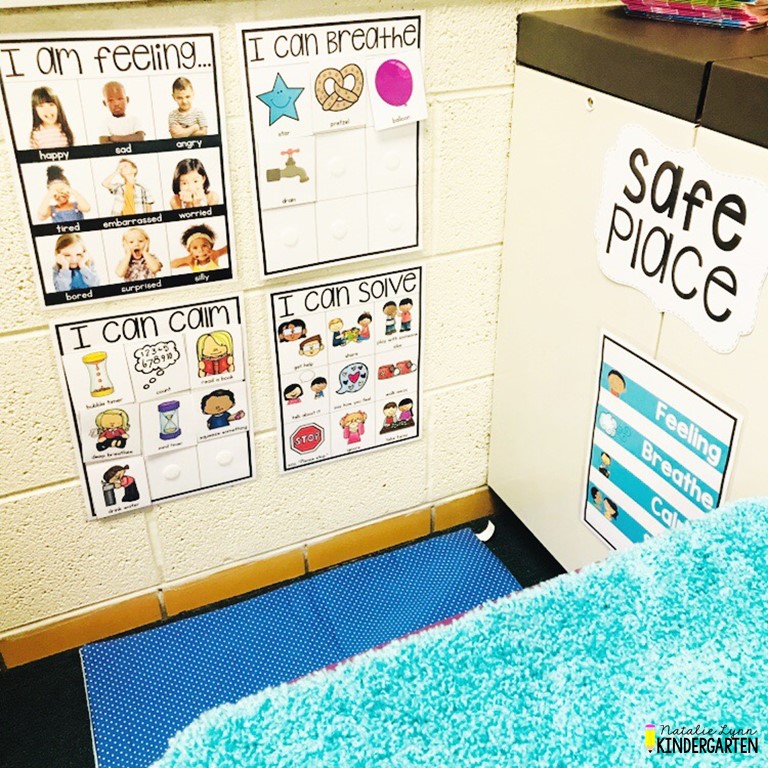
If you want your students to be able to self-regulate in the calm down area, you will need to teach explicit calm down steps.
In our calm down corner, my students begin by choosing their emotion. A poster of different emotions is their to help them. You could also put a mirror in your calm down area so students can see their own face.
After they identify their feelings, students choose a deep breathing exercise and take 3 deep breaths. This mindfulness activity will make the actual calming activity more effective.
Next, students choose one way to calm down. You will want to teach students what these calm down options are and how to use them effectively.
Some calm down strategies you might provide:
- Squeezing dough or Theraputty
- Tearing paper
- Throwing something soft like cotton balls
- Coloring
- Reading a book
- Getting a drink
- Counting
- Using a sand timer or bubble timer
- Using fidgets
Teach Students How to Problem Solve
The 4th and last step in our calm down corner is to choose how to solve your problem. This is an important strategy to teach in and of itself!
Your students might calm down, but it won’t help if they immediately go back and try to face their problem the same way. Teaching our students different ways they can solve their problems gives them a feeling of control and helps them make a positive choice.
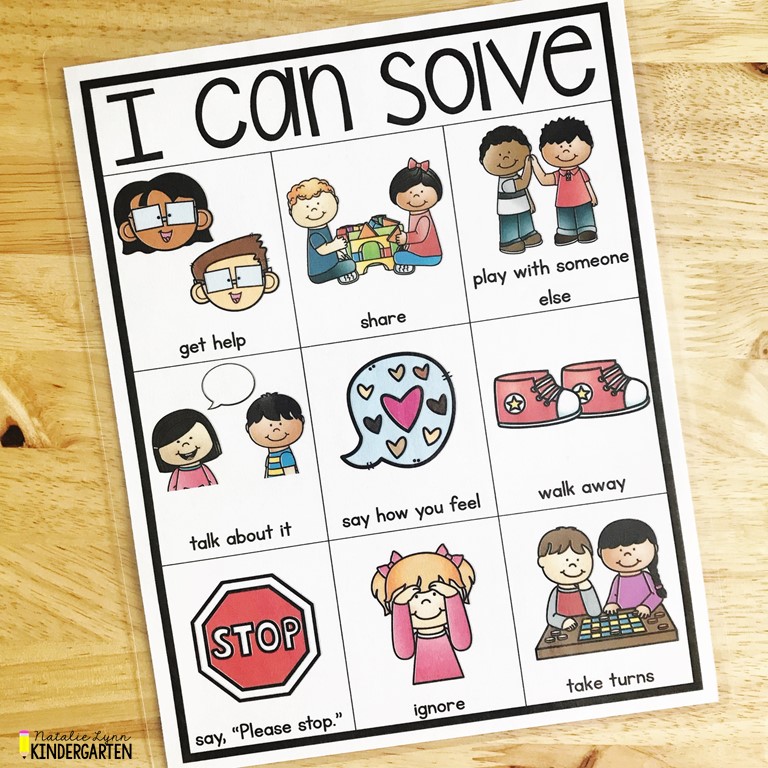
Different problem solving strategies you might teach include:
- Talking to the other person and telling them how you feel
- Talking to an adult
- Making a different choice
- Moving away
- Taking turns of sharing
Sometimes our students go to the calm down corner because they are feeling sad. They might be calm after, but the feeling of sadness or worry can linger.
An effective strategy I have used is to give those students a stuffed animal to “hold” their worry. They get to keep that stuffed animal next to them as they go back to their work and it will help hold onto that worry or sadness for them. In reality, it’s just a comfort.
Are you wanting to teach effective calm down strategies in your classroom? My Calm Down Kit included everything your need to teach your students how to self-regulate their emotions. It includes materials to create a calm down corner or to give students their own personal calm down supplies. This calm down kit is a must for social emotional learning in the classroom!


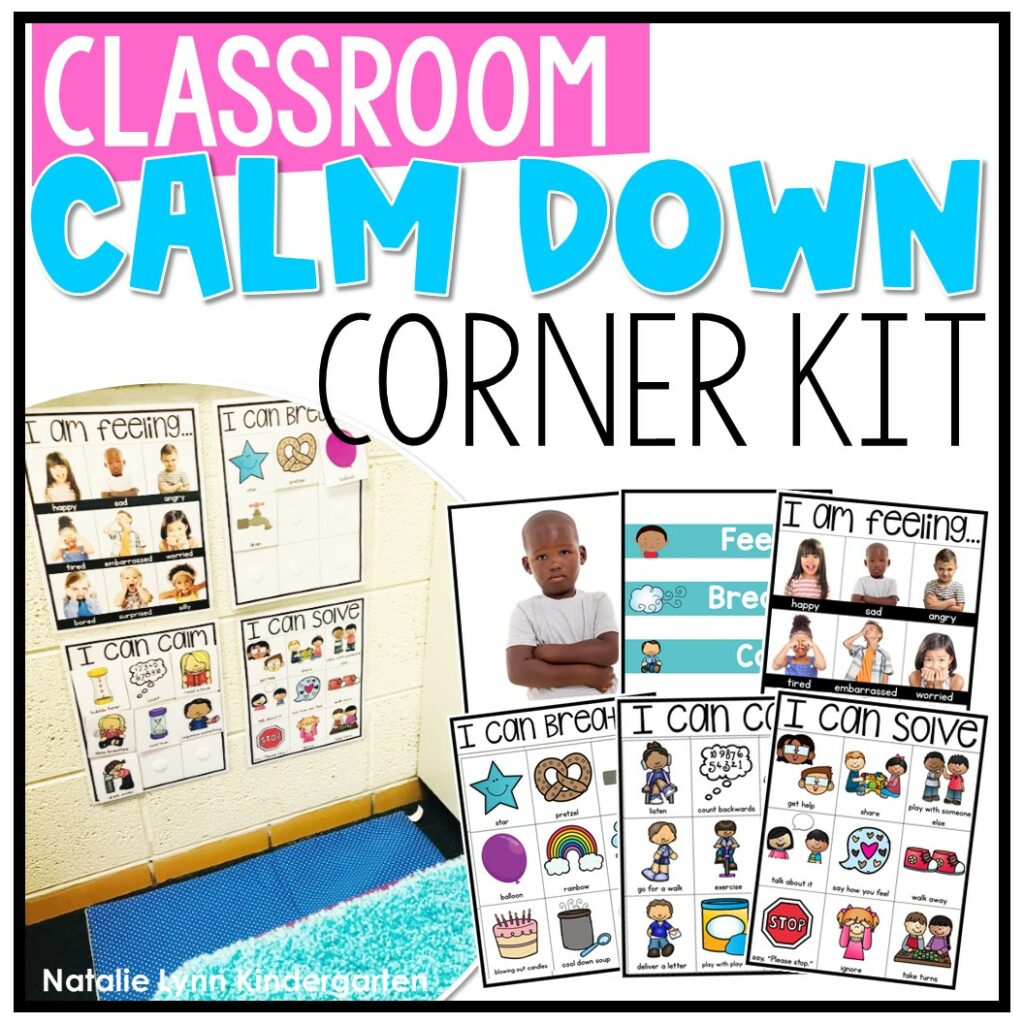

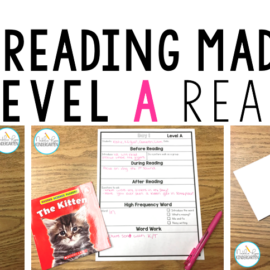
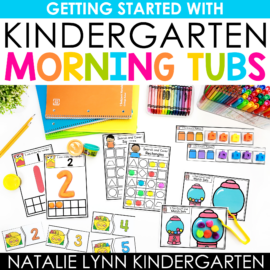
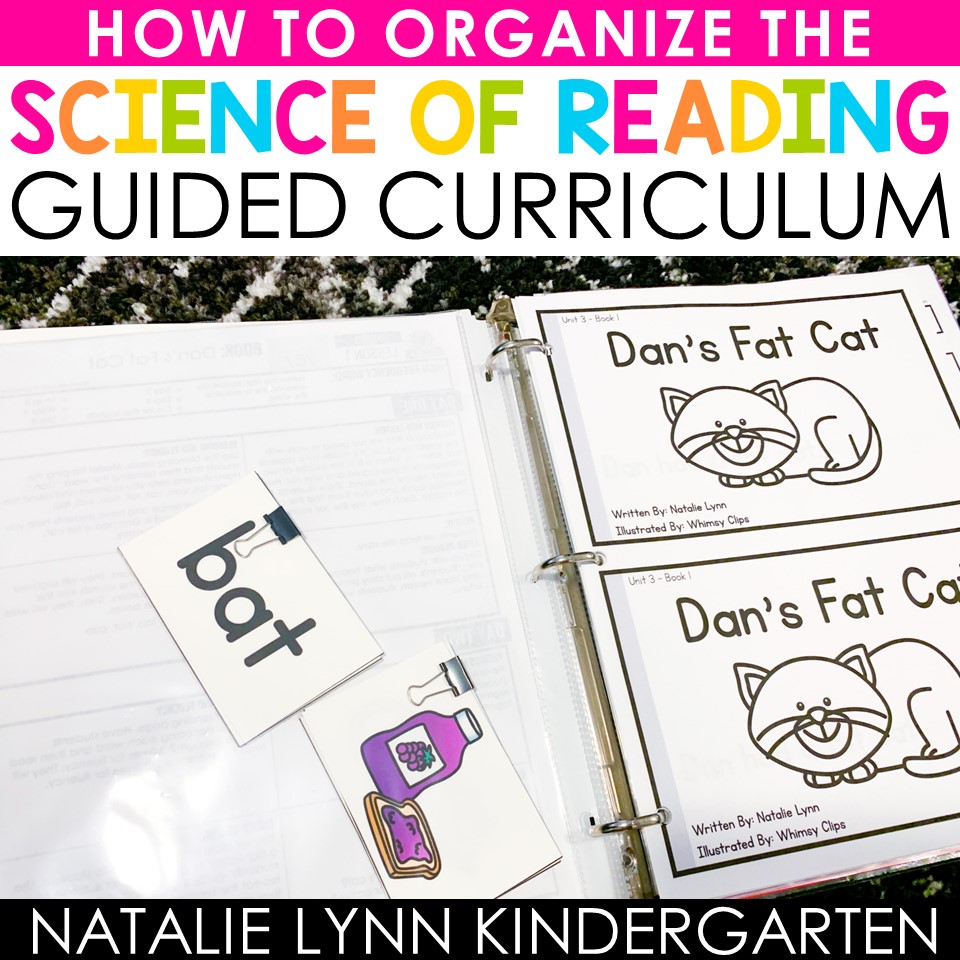

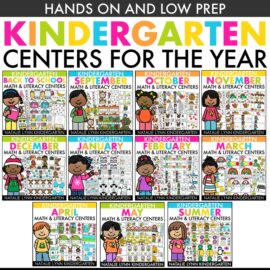
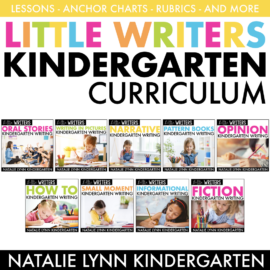
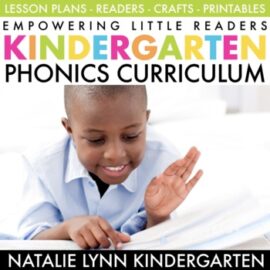
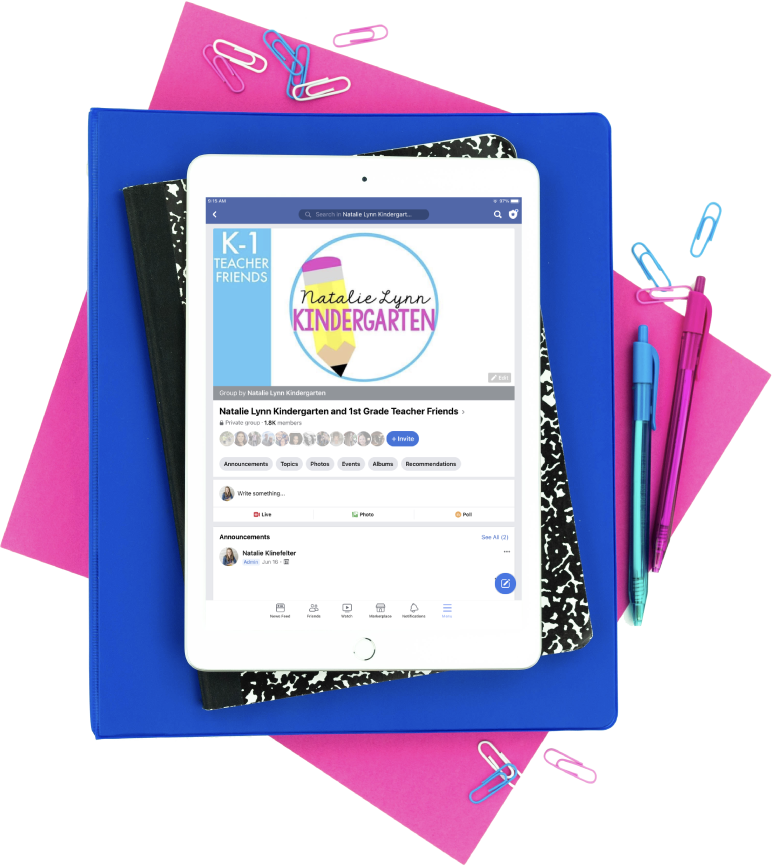

This is really great ????????
Thanks so much, Jeannie!